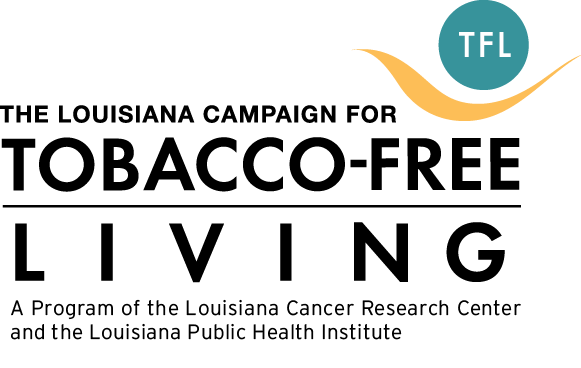Youth Tobacco Use
- »
- Prevention
- »
- Tobacco
- »
- Youth Tobacco Use
Education on Youth and Young Adult Tobacco Use
With the alarming rise of the use of e-cigarettes, or vapes, among youth, it’s more important than ever to work together every day to take down tobacco! No matter the type of product, tobacco use is almost always established during adolescence and there is a critical need to stop youth initiation of tobacco before it begins. Early use of any tobacco product, including e-cigarettes, among youth disrupts brain development, increases the risk of long-term addiction and may cause irreversible health effects before reaching adulthood.1 The risks of tobacco use can have a big impact on a young person’s overall health and every aspect of life, including their academic success.
90%
of residents who begin using tobacco start by age 18, and 99% start by age 26²
2500
youth and young adults become regular cigarette users every day, and at least a third of those who become regular cigarette users will die early due to tobacco use¹
3X
Although cigarette smoking has slightly decreased among youth, the current use of vapes is 3X HIGHER than cigarettes.³
Educate Staff About Vaping
Make sure your teachers and staff have access to the latest education and resources about youth tobacco prevention and cessation. These resources and trainings will equip teachers with the information they need to educate their students.
- E-Cigarettes and Youth; What Educators Need to Know Factsheet
- That USB Might Be An E-Cigarette Factsheet: This factsheet will help teachers be able to better identify a vape device.
- Virtual Field Trip: The Virtual Field Trip examines the science and data behind e-cigarettes and the impact they can have on teenagers’ health and well-being.
- Surgeon General E-Cigarette Advisory: This advisory from the Surgeon General urges immediate action to protect our nation’s young people from addiction to nicotine.
- E-Cigarette Product Visual Dictionary: The visual dictionary highlights the various e-cigarette devices, brands and the different e-cigarette product generations and substances used in these devices.
- CATCH My Breath Program: Coordinated Approach To Child Health (CATCH) My Breath is an evidence-based free youth vaping prevention program that provides up-to-date information to teachers, parents and health professionals to equip students with the knowledge and skills they need to make informed decisions about the use of e-cigarettes, including JUUL devices.
- The Live Vape Free Adult Advocate Program is a resource designed to equip parents, guardians or any adult with expert advice on how to approach teens about vaping. Adults will have access to self-paced learning experiences designed to turn parents, guardians and adult advocates into quit champions.
This program includes:- Expert guidance and education to help turn adults in teens’ lives into quit champions
- Tools to help empower constructive conversations about the risks associated with vaping
- Instructive videos as well as how-to articles and background information
- A guide to help teens build a quit plan, including how to get started, strategies for managing urges and staying quit
- Insights from individuals who are facing similar challenges
- The latest news and information about the health risks of vaping
- Vape-Free Schools Push Card: Print and share this push card with school staff and educate them on how to combat the vaping epidemic at your school.
Be a Leader at Your School
The Vape-Free Schools Toolkit guides you in creating a tobacco-free environment that helps prevent students from using tobacco products, including e-cigarettes, and supporting students who need help quitting.
Know the Risks
It is unsafe for youth to use tobacco products in any form, whether smoked, smokeless or electronic. There are thousands of chemicals and chemical compounds, many of which are considered toxic, in tobacco products.
Tobacco use begins to damage the body immediately. And youth who use multiple tobacco products are at higher risk for developing nicotine dependence and might be more likely to continue using tobacco into adulthood.1 Young adults under age 30 who started smoking in their teens and early twenties can develop serious health-related problems, including:
- Early cardiovascular disease
- Smaller lungs that don’t function normally
- Wheezing that can lead to a diagnosis of asthma
- DNA damage that can cause cancer almost anywhere in the body1
The Dangers of Nicotine
What makes tobacco so dangerously addictive is nicotine—the addictive chemical that provides an immediate hit of satisfaction. Nicotine is quickly absorbed when smoked, chewed or vaped, going directly to the brain, making the user feel happy and satisfied which makes nicotine dangerously addictive. As tobacco use continues, every organ in their bodies is repeatedly exposed to harmful chemicals.
More Americans are addicted to nicotine than any other drug. Research suggests nicotine may be as addictive as heroin, cocaine or alcohol. Nicotine in any form is harmful to a teenager’s still-developing brain and can negatively affect memory, learning and concentration.4
Challenges for Our Youth
Now that you know why tobacco use harms youth and young adults, get educated on the challenges youth are facing. First, take a look at the data from our state to get a better understanding of the relationship youth have with tobacco. Then, learn about how the tobacco industry is targeting youth through marketing and new, attractive products to build their next generation of life-long customers.

Louisiana Youth Tobacco Survey
The Louisiana Youth Tobacco Survey collects data from students in grades 6 through 12 related to tobacco. The survey is conducted in schools every two years.

The Next Generation for Tobacco Companies
Tobacco companies target youth and young adults as the potential next generation of lifelong customers. Young people are especially susceptible to marketing from the tobacco industry when first tempted by tobacco products.

New Tobacco Products for Youth
Tobacco companies also have a long history of developing and marketing flavored tobacco products as “starter” products that attract kids. These companies continue to develop new products like e-cigarettes and IQOS to appeal to younger audiences.
This webpage is a part of our Vape-Free Schools Toolkit, created in partnership with the Louisiana Campaign for Tobacco-free Living.
